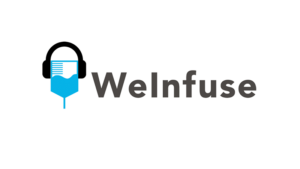Published in INFUSION Magazine | July 31, 2020 | Written by Reece Norris, Sydney McPherson
As COVID-19 has forced all medical operations to implement emergency preparedness procedures, optimal scheduling in the infusion center is essential to providing continual safe and efficient care for patients.
As hospitals focus on treating patients suffering from the novel coronavirus, many infusion center operators have seen an increase in patients seeking to transfer from hospital-based infusion centers (HOPDs) to ambulatory infusion suites within home infusion pharmacies (AISs) or stand-alone provider-based infusion centers (AICs). While key differences exist between an AIS and AIC, we’ll treat them the same for the purpose of this article and call them both: infusion centers. With HOPDs discharging patients and infusion centers retooling their operations for COVID-19, optimizing the schedule is what allows all patients, existing and new, to continue receiving essential infusion therapy.
The WeInfuse podcast interviewed several providers and infusion center operators to get their advice and best practices for navigating the COVID-19 crisis. The advice among them was consistent: prioritize the safety of staff and patients, optimize patient scheduling and consistently communicate with staff and patients.
Safety of staff and patients:
Ensuring the health and safety of staff is essential in order to be able to care for patients. Across the board, infusion centers are stepping up their sanitization efforts and retraining administrative and clinical staff on proper hygiene and use of personal protection equipment (PPE). Safety also includes making sure nurses and clinicians have the PPE they need when interacting with patients, which can be challenging given the instability and shortages of PPE supplies. If possible, many infusion centers are also allowing some administrative staff members to work remotely in order to limit the number of people in the center. Infusion centers are also requiring that their patients wear masks and limit the number of guests that accompany them to their appointments. See Exhibit 1 for a list of operational considerations for infusion centers developed by NHIA.
EXHIBIT 1:
- Avoid the use of suites if areas cannot be adequately segregated from home infusion pharmacy operations
- Chairs should be a minimum of 6 feet apart
- Limit suite to essential staff to complete patient care
- Restrict caregivers, family, friends, etc. during infusion
- Schedule at 50% capacity
- Extend hours to maximize patient visits while maintaining appropriate distancing recommendations
- Develop and implement a telephonic screening tool to be completed at least 24 hours prior to each visit and immediately prior to entering the suite
- Screening prior to entering the suite must be in segregated area that would allow for decontaminations
- If patient fails a screen, immediately contact the physician and cancel the appointment. Evaluate whether home infusion IS a viable alternative
- Ensure proper cleaning and disinfection is performed prior to, and after, each patient
- Nursing staff should properly garb (i.e. face cover, gloves and gown) at all times
- Have patients wait in their vehicles until their appointment time. Have mobile communications to alert patient when they can enter the suite area
Because many infusion patients are immunocompromised or considered “at-risk”, thorough pre-screening and emergency preparedness procedures are allowing ambulatory infusion centers to continue safely infusing.
“There are patients who receive infusion therapy who are particularly vulnerable to these types of infections and viruses,” said Dr. Robert Roteman of CIVIC Infusion Center in Wilton, CT. “We’re working to ensure patients who need infusion therapy are still able to receive it.”
Higher-risk patients, those receiving drugs for auto-immune disease, can safely and effectively avoid treatment delays by receiving their therapy at an infusion center or home. This is an optimal solution in times such as the current pandemic, and allows patients to stay on course to manage their chronic disease. In addition, receiving their therapy in a properly managed infusion suite or the home reduces the risk of exposure that high-risk patients might encounter in the hospital or other site of care.
Communication procedures:
Communicate, communicate, communicate.
Infusion centers must be proactive. Call ahead of a patient’s scheduled appointment and explain your infusion centers procedures to patients so they know what will happen when they arrive. What symptoms should they look for ahead of time to determine if they can still come to their scheduled appointment? Will you be taking their temperature at the door? Should they call the office when they arrive? Are they allowed to bring a guest? This helps smooth and expedite the check-in and pre-screen process.
“Everyone feels better when they know why we’re doing what we’re doing,” said Callie Turk, COO of FlexCare Infusion Center in Oklahoma City, OK. “Communication is key right now.”
Confirm appointments and pre-screen patients 24 hours ahead of time with the questions provided by the CDC. Whether doing appointment reminders by phone or via an automated system, limiting the number of “no-shows” and “reschedules” allows for operators to use their time efficiently and effectively. While not in the office, this is where administrators can be extremely helpful.
“We’re calling every patient before their appointment,” said Dr. Vikram Sengupta of Thrivewell Infusion in NYC. “We’re also checking patient vital signs at the door. It’s exhaustive, but we’re being thorough.”
Schedule based on layout:
Consider your infusion center’s layout and if it’s being effectively utilized. For infusion centers built out with private suites, keeping patients 6 feet apart is much easier. However, multi-chair open treatment rooms may have to make meaningful adjustments such as installing barriers between chairs and removing chairs to increase the distance between each chair. Removing chairs can result in serious capacity constraints. Accordingly, infusion centers must make their schedule on “usable” chairs. Some chairs may not be able to be used in order to maintain at least 6 feet of distance between patients. Infusion centers may consider investing in barriers between chairs if time and budget allows.
In response to the capacity constraints, some infusion centers are extending their weekday hours and opening on weekends. Extending hours and weekend availability can be a significant investment in overtime and weekend pay rates, but it’s worth it to maintain staff and patient safety. For providers that bill Medicare, these additional COVID-19-related expenses should be tracked as part of the terms and conditions associated with federal relief funds (as applicable).
Moving forward:
In light of massive disruptions coronavirus has created in the healthcare system, infusion centers have the unique opportunity to continue providing patients with affordable, care outside of the acute care setting. Proactive safety procedures, consistent communication strategies and layout-considered scheduling are just a few steps infusion centers are currently taking, or implementing, as part of their emergency preparedness plans.
Has your infusion center taken any different approaches to maintaining a safe environment for patients and staff? Use this time as an opportunity to connect with other infusion center operators and share advice and best practices. Additionally, connect online with organizations like NHIA and NICA to access their published resources and guidance.
Read the article published in the NHIA INFUSION magazine here.




